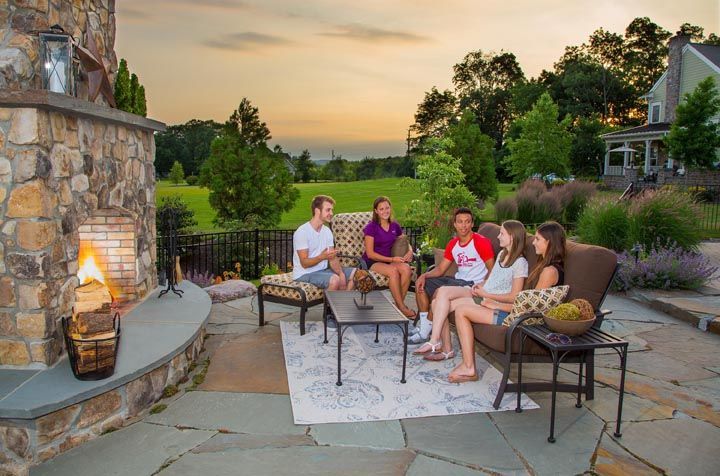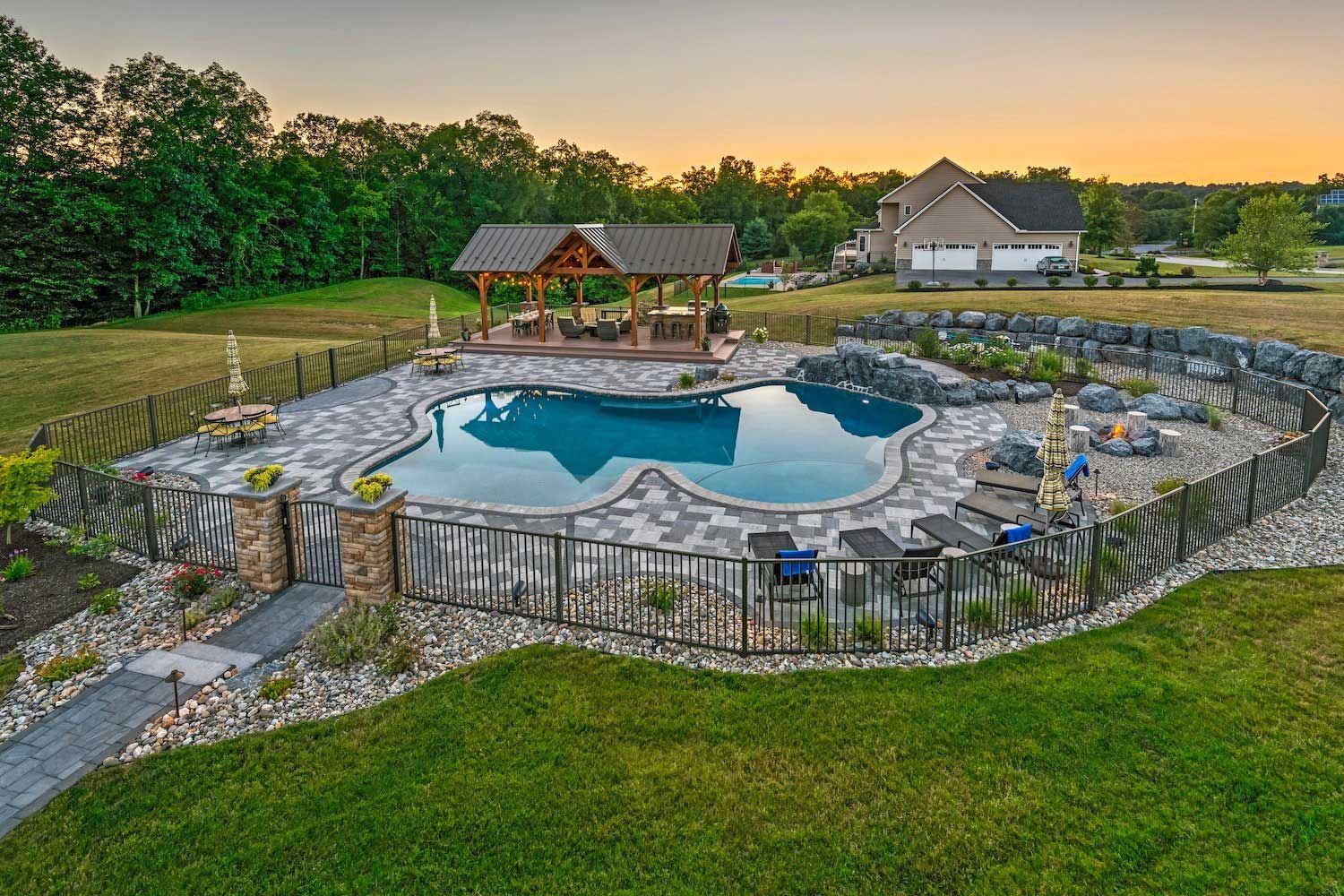5 Paver Patio Problems: Are These Common Issues Legitimate Concerns?
Are you considering a paver patio but worried about some of the problems with pavers you may have heard? Maybe you heard these allegations from a local concrete company or even someone you know who has had a problem with their own paver patio?
These problems don’t seem to happen to everyone, so you might be wondering whether these are legitimate concerns that should stand in your way of the patio you want.
While you know you want a functional space where you can dine outside, share a drink around the fire pit, or even just sit back and relax outdoors after a long day at work, the last thing that you want is to end up with a space that has problems and creates unwanted stress.
Investigating potential paver problems and getting to the bottom of the matter is a smart move. After all, you want to make the best choice when it comes to a patio that will last for many years to come.
Here are some of the common complaints about paver patios and some important facts to consider.
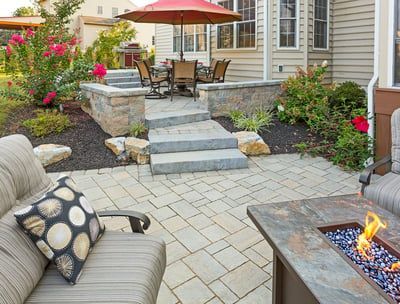
1. Pavers Sinking in Areas
Sunken pavers are not only an eyesore, but they are also typically a warning sign of a larger problem. In fact, a paver patio that is sinking in areas very likely might have a drainage problem that was left unaddressed prior to construction. This issue will need to be addressed and corrected and then pavers will need to be re-laid.
Of course, it could also just be that the base was not properly prepared before the pavers were laid. The base material layer is the most critical element of the entire patio construction.
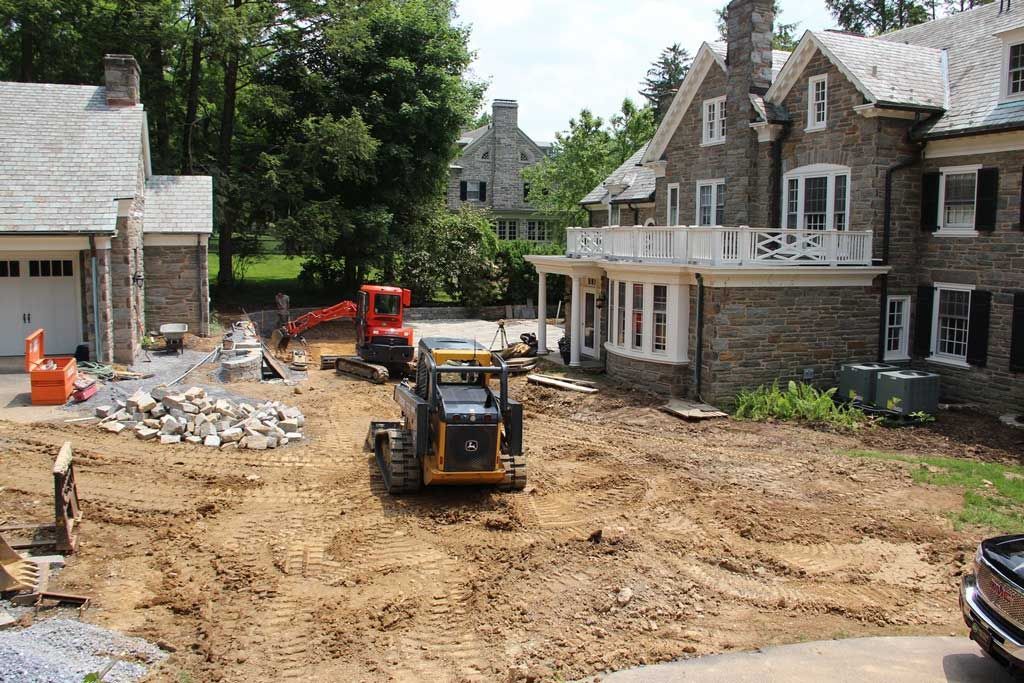
Preparing a base requires proper excavation (to a depth determined by factors such as soil type and site drainage). Failing to excavate deep enough can be another reason for sunken pavers and ultimate patio failure. Poor soils and trash left from builders absolutely must be removed during the excavation as overstabilization of the patio site is extremely important to its integrity.
At times, you can’t just excavate to the standard 10 inches and move on. If you go down to 10 inches, find there’s old fill dirt, poor soils, or other problems, you have to keep going. Oftentimes the inferior soil that is uncovered during excavation is the result of water issues in the house that also bear correcting.
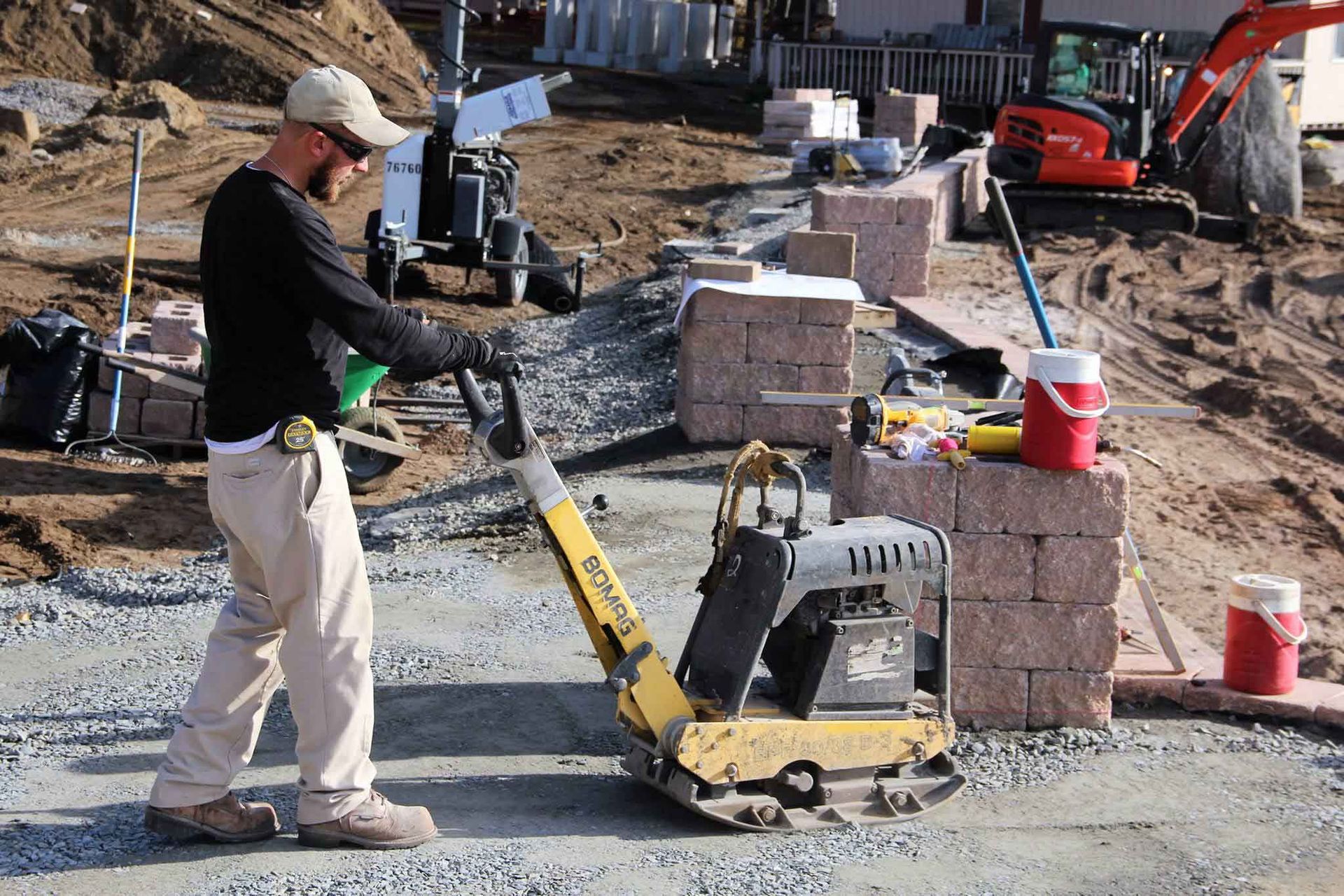
Using the proper amount of fill of modified crushed stone within the excavated site is also part of base preparation. This stone is graded properly, then compacted to form a solid base, a few inches at a time until the finished depth is achieved.
If pavers are sinking, it might be an issue of improper compaction of the base material. If it loosens over time, the pavers can begin to sink. Or, it’s also possible that not enough gravel was used in the first place.
2. A Paver Patio with Poor Drainage
As mentioned, an uncorrected drainage problem can lead to the patio beginning to sink or “cave in” as the ground underneath it erodes. As this happens, pavers can actually begin to crack.
Sunken pavers can lead to water “pooling” on top of the patio. Pooling can also occur when the pitch isn’t correct. This could lead to low areas that will always collect water.
But poor drainage can cause other problems as well. We’ve seen plant beds surrounding a patio get washed away when water rushes across the patio instead of being properly channeled away from the home and landscaping.
Poor drainage can also cause rainwater to collect underneath your patio or come out with such a force that it may begin to destroy the integrity of the foundation of your home.
Believe it or not, poor drainage associated with your patio can even progress to affect the inside of your home. In a poor design, water can become trapped. With nowhere to go, it may flow towards your house and wind up in your basement, leading to tens of thousands of dollars worth of repair work.

All of these problems could be prevented when you start your patio design with a grading and drainage plan. It’s critical that this plan shows exactly where the water is going to go. Unfortunately, too often, landscape contractors just install a patio with no real thought as to what drainage problems exist (or may be created by the patio installation). In the end, this lack of planning can be a costly mistake.
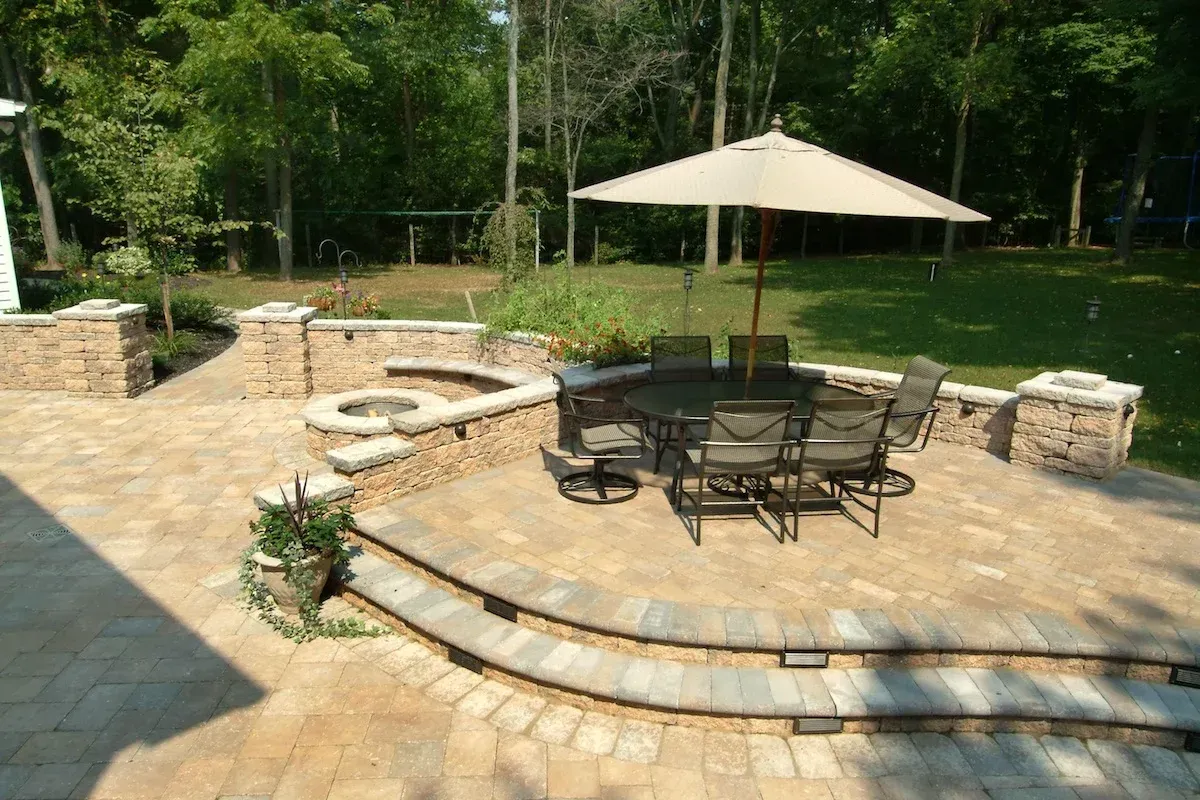
3. Weed Growth in the Joints
Another common gripe that we hear about paver patios is that weeds can grow in the joints. However, the use of a special sand (called polymeric sand) in the joints will make a huge difference.
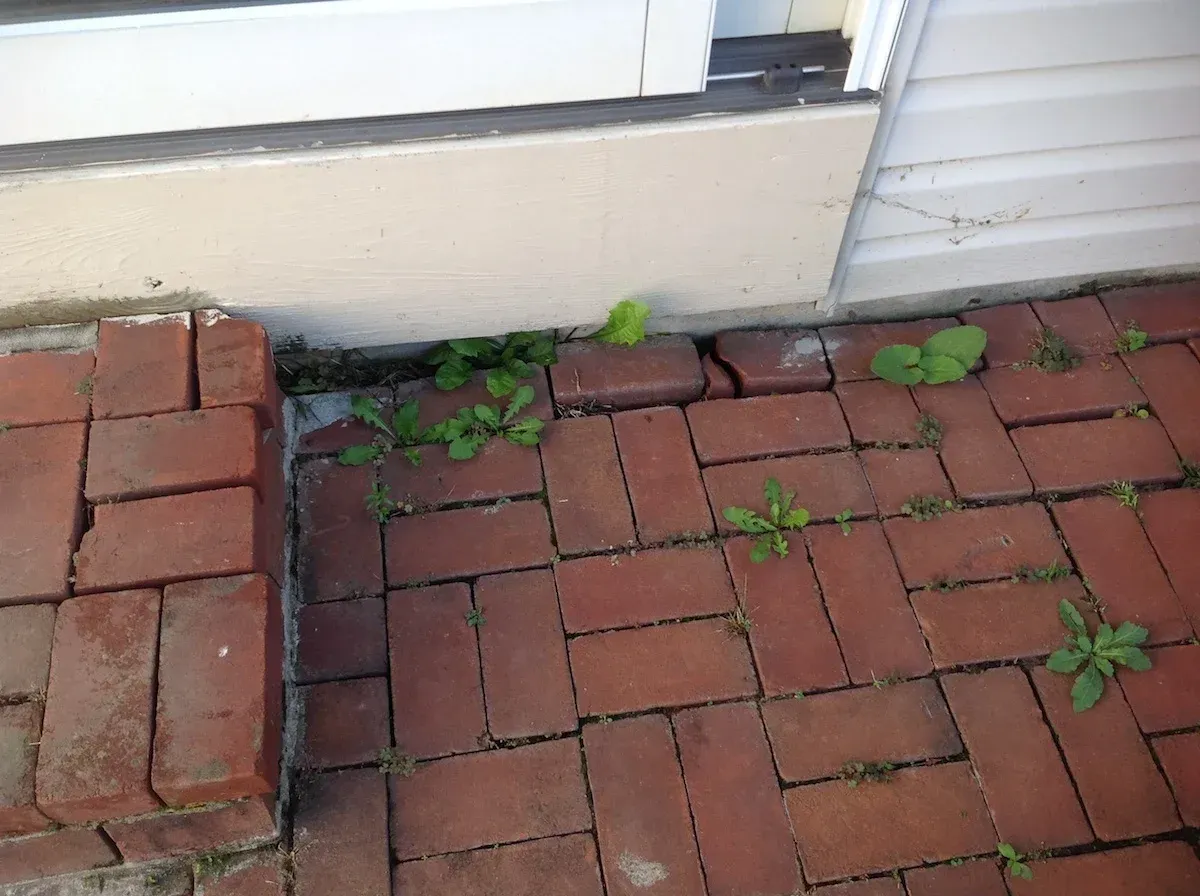
Polymeric sand is a fine sand that is combined with additives (usually silica) which, when mixed with water, forms a binding agent. Rather than loose sand, which weeds could grow through, this special sand will reduce the amount of weeds that break through.
However, if polymeric sand is not installed correctly, this can pose problems. We see a lot of full patio failures with incorrectly installed polymeric sand. If the specialized sand is installed wrong, it may not stay put, leaving nothing in your joints. This can lead to a patio full of weeds!
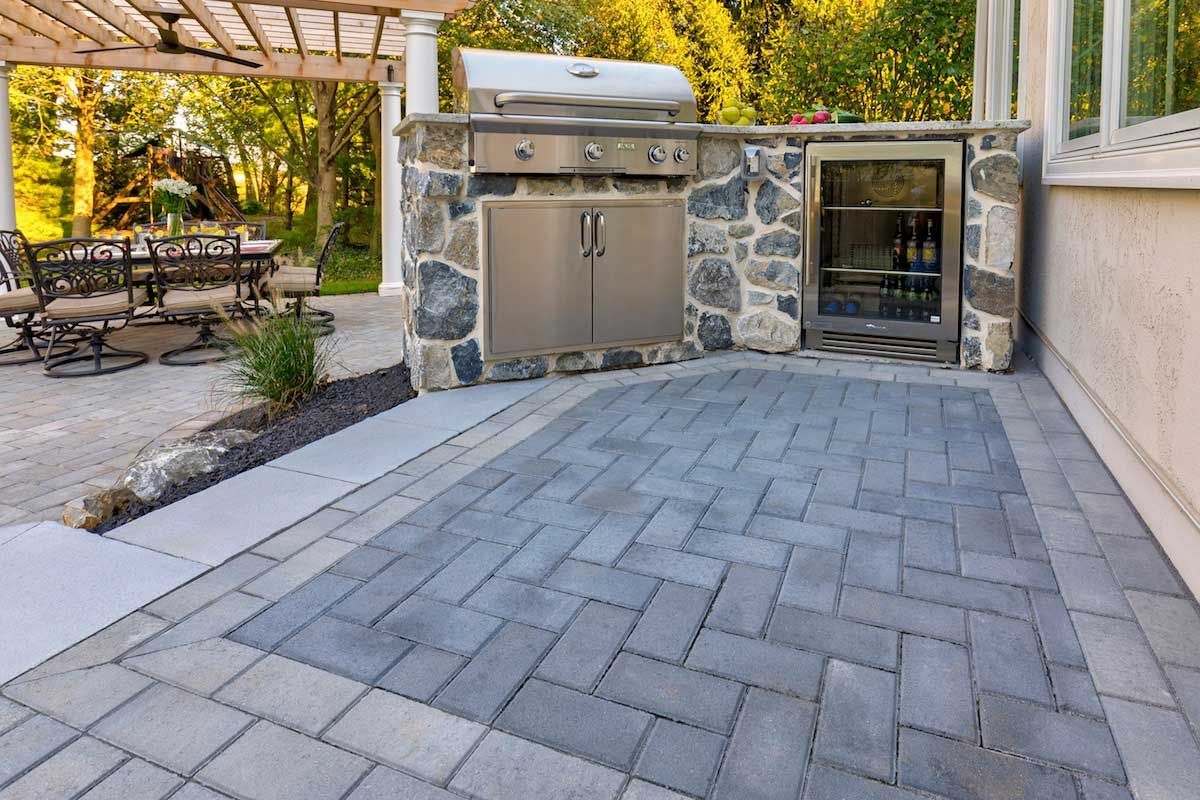
In addition, the installation of geotextile fabric, which is a material with a very high tensile strength that is installed underneath of your paver patio, is also a barrier to any weeds breaking through from the soil beneath. Geotextile fabric also strengthens the base of your patio by acting as a bridge over top of the soft spots.
While some occasional weeds might pop up from seeds that have blown on top of your patio, the use of these two elements will eliminate most weed growth.
4. A Paver Patio with Trip Hazards
A paver patio that has uneven pavers can create dangerous trip hazards. This is once again most likely due to a problem with the construction of the base. The ground might not have been compact enough to bear the weight of the pavers and the people on top of them, and therefore some have sunk or become uneven.
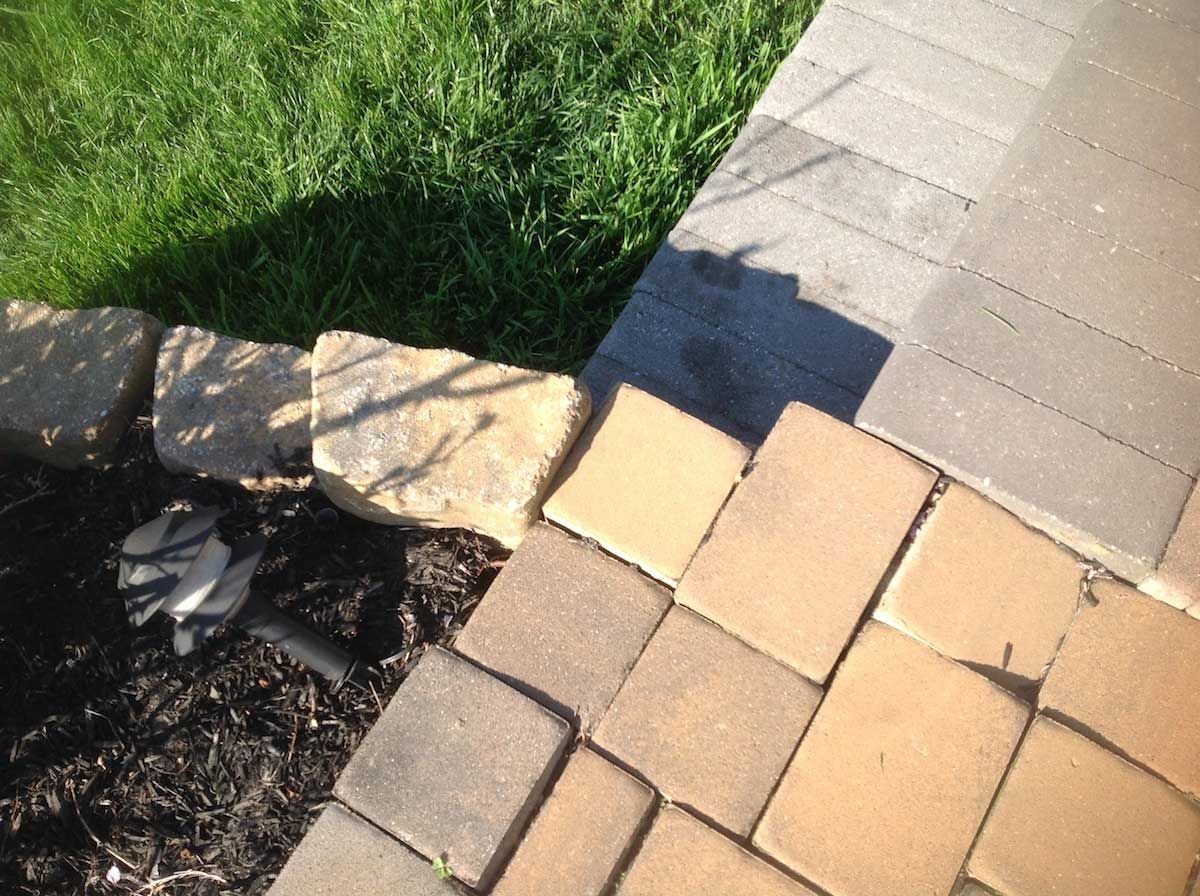
A patio that is forming uneven gaps throughout its layout can also become trip hazards. Extra space between pavers is typically caused by a faulty base, including lack of compaction. This would cause the pavers to shift and separate over time. Space between pavers can also be caused by poor workmanship during the installation. It’s quite possible the pavers were installed with too much extra space to begin with.
5. A Leaning Edge
Without a solid edging system along the perimeter of your patio, the pavers along the edge may begin to separate from the patio and start to lean. An edging system is needed to keep pavers in place. The proper edging product helps keep pavers contained.

A successful edging system requires proper installation. This all starts with the base. The base should extend beyond the patio edging product by a minimum of six inches so that it has a firm and stable foundation to rest upon.
If a solid edging system was not part of your patio construction or if it was installed improperly, then you’re likely to end up with the edge leaning or even dropping off entirely.
Various options exist for edging, from plastic frames that are pinned into the base material, to additional hardscape materials such as wall block or edgestone.
Are These Paver Problems Cause for Concern?
Without a solid edging system along the perimeter of your patio, the pavers along the edge may begin to separate from the patio and start to lean. An edging system is needed to keep pavers in place. The proper edging product helps keep pavers contained.
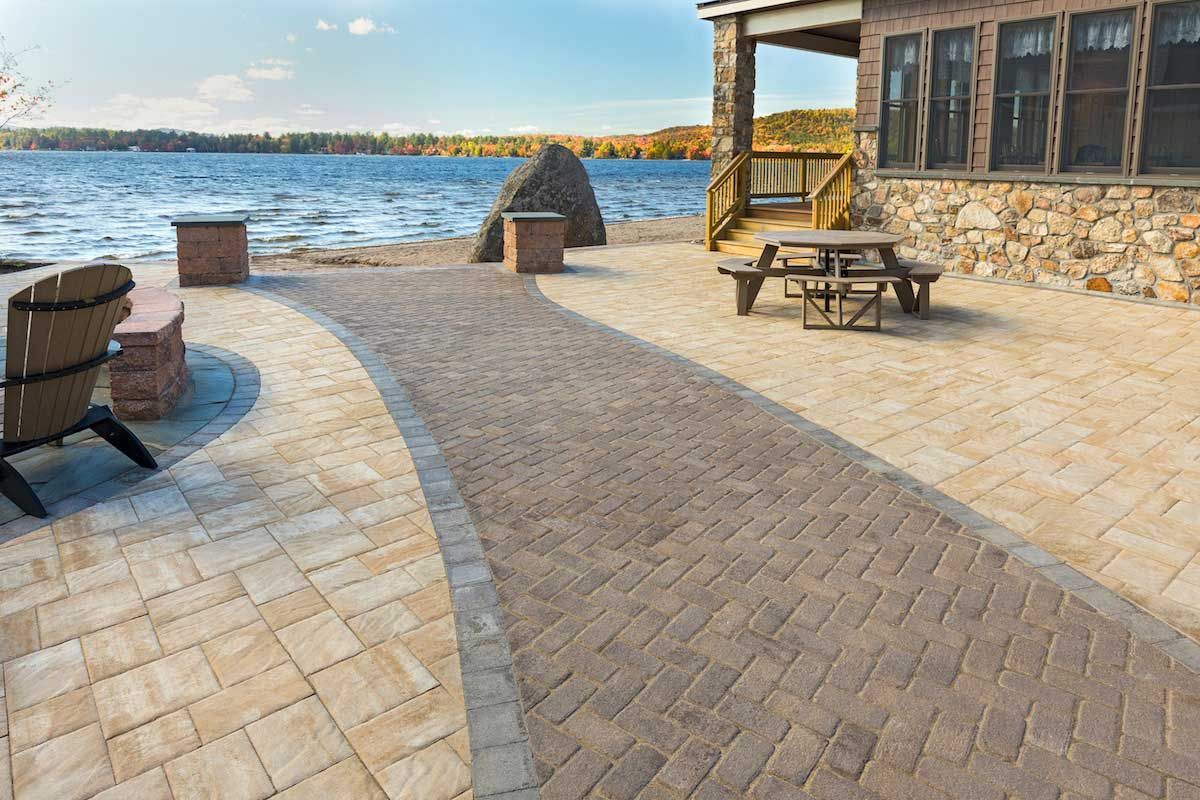
As mentioned, the vast majority of problems with pavers are the result of a poorly constructed base. The patio base is the foundation of the entire project (literally) and if there are corners cut in haste or it is improperly prepared, then the entire patio could ultimately fail.
So, should you be worried about these common paver problems? The simple answer is, “No,” assuming the patio is built properly from start to finish.
And that’s a big assumption on which everything hinges. If even one aspect of the patio is built improperly, then these problems will be a concern.
That makes it critically important that you choose the right landscape contractor.
Avoiding Problems with Pavers
The key to avoiding paver problems comes down to selecting a landscape company that not only knows how to do the job correctly, but meticulously follows proper procedures on every project.
A landscape company that has a great reputation designing and installing hundreds of paver patios will know exactly how to make sure that these worries never become actual problems with your paver patio.
Your choice matters.
Find a contractor that has been in business for a long time, has a solid reputation, and focuses on this type of work daily. By choosing a company that will install your paver patio properly from the very start, you no longer have to fret that something will fail as a result of poor design or construction. You can feel confident that your wise choice in landscape companies will result in a truly worry-free paver patio for you to enjoy to the fullest.

Want to learn more about designing the ultimate paver patio at your Harrisburg, Lancaster, York, Hershey, or Reading, PA home? Contact us for a free consultation and we’ll be happy to answer your questions about materials, design, or the process of getting your dream backyard.
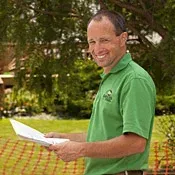
Written by
Art Nafziger, Operations Manager
Art has worked for ETW since 2005. He has an Associates Degree in Design Drafting, which is a great asset in reading plans and managing unexpected challenges that come up during projects. He enjoys working in his yard and spending time in the outdoors. He also enjoys spending time with his family, having individual time alone with each one of them on his Tuesday night date nights. He resides in New Holland, with his wife and three children.



